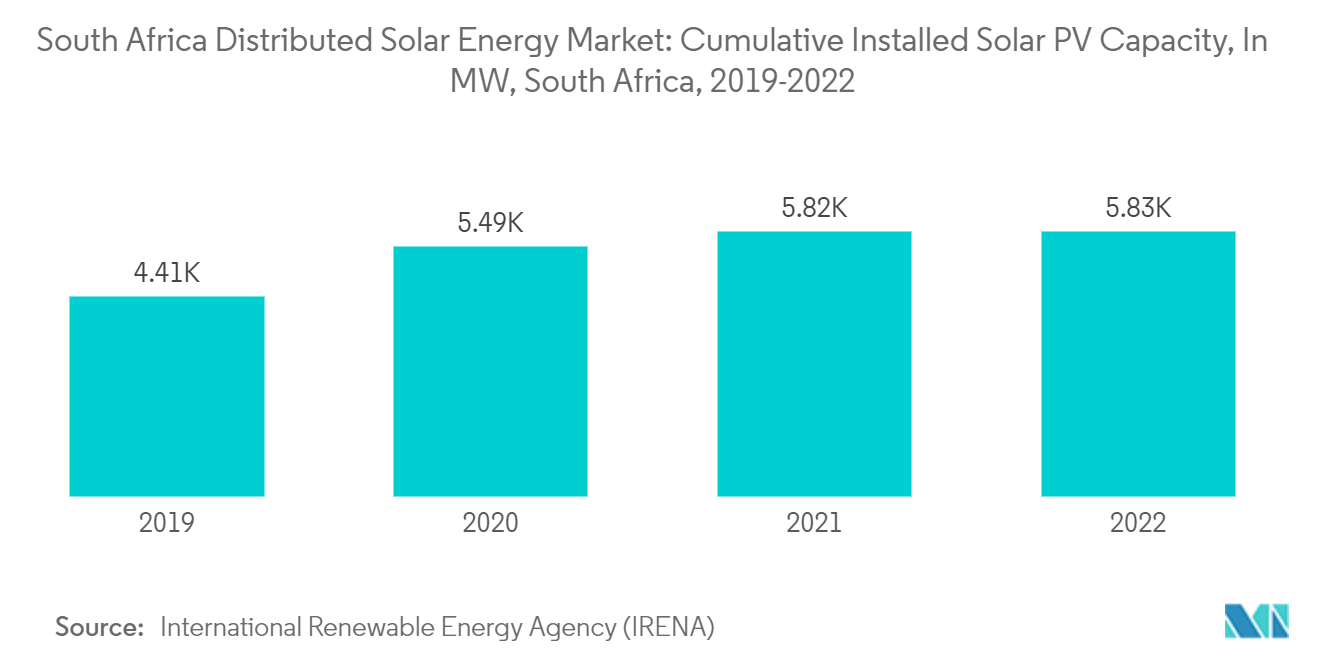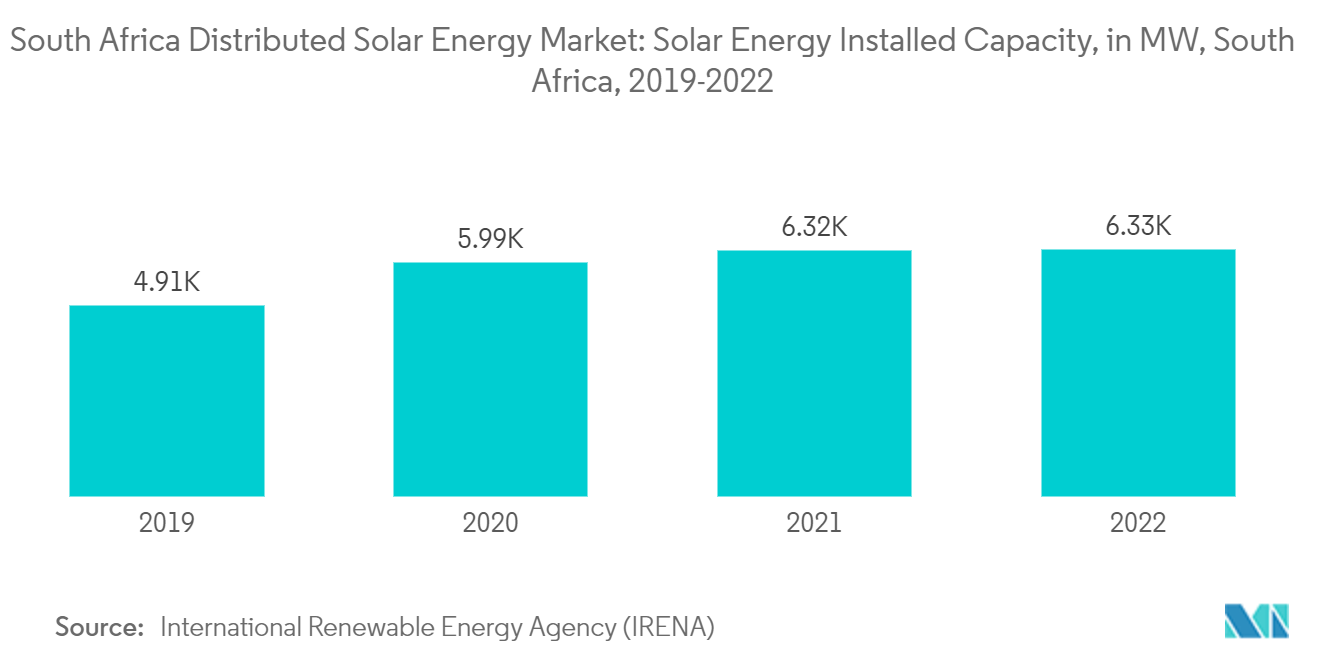Market Trends of South Africa Distributed Solar Energy Industry
Commercial and Industrial Segment to Witness Significant Growth
- Anticipated growth in the solar rooftop market is expected to be particularly prominent in South Africa's commercial and industrial sectors in the coming years, driven by the affordability and essential nature of this technology. Given that the commercial and industrial sector tends to have higher electricity consumption rates, the appeal of rooftop solar is magnified as a means of mitigating these elevated energy costs. This sector also boasts extensive roof spaces, making it particularly well-suited for the installation of rooftop solar PV systems.
- The GreenCape Smart Electricity project is actively working to establish a conducive environment for rooftop PV and other small-scale embedded generation (SSEG) technologies in the Western Cape. This initiative has the potential to result in over 200 MW of rooftop installations in the Western Cape in the foreseeable future.
- Furthermore, the operational collaboration of rooftop solar systems, generating electricity during daylight hours, aligns seamlessly with the peak operational periods of many manufacturing facilities. This enables these facilities to either reduce their reliance on the national grid or potentially eliminate it while the sun is actively generating power.
- In 2022, the cumulative installed solar PV capacity reached 5,826 MW, up from 5,816 MW in 2021. Furthermore, in South Africa, there has been an increasing customer interest in rooftop PV installations, even in the absence of specific policies or standards for promoting this technology.
- Hence, the use of rooftop solar PV modules in the commercial and industrial segments is expected to grow faster during the forecast period.

Supportive Government Policies to Drive the Market
- Supportive government policies are poised to drive the remarkable growth of the distributed solar energy market in South Africa. The country's commitment to renewable energy is exemplified through strategic initiatives, with the Renewable Energy Independent Power Producer Procurement (REIPPP) program standing out as a cornerstone. This program not only attracts substantial investments but also acts as a facilitator for large-scale solar projects, contributing significantly to the expansion of the solar energy sector. The transparent regulatory framework established by the government instills confidence in investors, creating an environment conducive to the flourishing of the distributed solar energy market.
- In tandem with the REIPPP program, South Africa has implemented a spectrum of complementary policies designed to accelerate the adoption of distributed solar energy. Tax incentives, feed-in tariffs, and net metering mechanisms have been instrumental in making solar installations financially viable for businesses and individuals alike.
- These measures not only drive economic feasibility but also underscore the government's commitment to fostering a decentralized energy landscape. By championing such policies, South Africa aligns itself with global sustainability goals and positions the nation as a key player in the transition to cleaner, more sustainable energy alternatives.
- For instance, the Integrated Energy Plan (IEP) was initiated to provide a roadmap of the country's future energy landscape, which directs future energy infrastructure investments and policy development. This policy is reviewed periodically to consider changes in the macroeconomic environment, changes in national proprieties, developments in new technologies, and others.
- The government of South Africa approved the Integrated Resource Plan (IRP) 2019, which aims to increase the share of renewable energy in the total energy mix. By 2030, the country aims for an additional capacity of 14.4 GW of wind power, 6 GW of solar, 3 GW of gas, 2.5 GW of hydropower, 2.1 GW of storage, and 1.5 GW of coal.
- Moreover, the explicit acknowledgment of the economic and environmental benefits of solar energy by the South African government reinforces the trajectory of the distributed solar energy market. These policies not only encourage the deployment of solar technologies but also contribute to the reduction of greenhouse gas emissions, thereby mitigating the impacts of climate change. The government's foresight in recognizing the dual role of distributed solar energy in fostering economic growth and environmental sustainability underscores its commitment to a holistic energy transition.
- With these steps, the installed capacity of solar energy in the country has observed significant growth in recent years. Between 2019 and 2022, the cumulative installed capacity of solar energy in the country increased by more than 28%, signifying the effective implementation of these programs in the country.
- Therefore, as per the points mentioned above, supportive government policies are expected to drive the marker during the forecast period.


